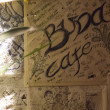As the battle rap sub culture of hip-hop continues to grow, Toronto’s King of the Dot (KOTD) remains at the forefront of this ever-expanding movement. While the battle rap league throws various events throughout the year, what seems to be its most intriguing event is the Blackout series, where only the participating battle rappers are announced in advance, but the actual match-ups aren’t known until the night of, when displayed on a big screen.
This year’s edition marked the sixth instalment and from the jump, I figured that as the event is held in the 6ix, Blackout 6 would play off of that, or add something significantly different from past editions. This wasn’t the case, but nonetheless, Blackout’s concept sets it apart from other leagues’ events.
The three-day event – press conference on day one and then two nights filled with battle match-ups – is also live streamed via pay-per-view, so those not able to make it in person can watch from wherever they are.

If you’ve never been to a battle rap event, from any of the top leagues, it’s definitely something to experience. The skill, practice, talent and wit that come along with being in the ring are something to see and appreciate. The energy and anticipation in the venue, waiting to hear the next haymaker’s punchline or catch the next scheme – it’s contagious.
In an age where lyricism is found on the back burner for the most part in mainstream rap, battle rap and its leagues are leading the way in keeping it alive, flourishing, all while putting money in emcees’ pockets.
The diversity of the crowd at Blackout was a representation of the diverse line up of emcees that battle for the league. Whatever your flavour is – street shit, comedic emcees, freestylers or a varying combination of styles – Blackout had it all.
As an avid fan, I find I’m torn between seeing battle rap expand to larger venues as a result of the growing popularity or keeping it in smaller settings, where I can hear every line and everyone there is in tune, as opposed to bigger crowds where often overzealous fans can ruin a battle with excessive booing or cheering.
For Blackout 6 this year, KOTD had the emcees in the middle of the floor surrounded by the crowd cipher-style (divided by a fence) and then raised platforms on the outside for people to be able to see as well. For events of this magnitude, a stage is probably best, so the battlers can really showcase their ability to perform and engage the crowd, while allowing everyone to actually see them with minimal obstruction.
Arguably the battle of the weekend was day one’s main event match-up between Dizaster and Iron Solomon. The back and forth between the two was intense and it was clear both were well prepared with carefully thought out material and angles.
What may have been the weirdest, but most memorable moment of the battle was in Dizaster’s third round when he tried to put on a Hitler-esque moustache and started rapping as if he were German. The moustache kept falling off so he continued his rant without it.
Battle rappers can’t rely on the last hot verse or song to perform each time they step out. It always has to be fresh to keep the fans engaged.
Despite a few battlers having to back out, the event was still a success. Bonnie Godiva stepped in to battle Realiztic in place of Born and, with only one week’s prep, the two of them put on a show. The battle between Chedda Cheese and Carter Deems was easily the most entertaining, with both emcees having the crowd cracking up from their witty lines and comical punchlines.
From its humble beginnings, battle rap can be likened to a huge gladiator sport where every time an emcee steps out on that stage, they have to bring some new fire. And that’s what separates a battle emcee performance and a typical performance from an artist’s catalogue.
Battle rappers can’t rely on the last hot verse or song to perform each time they step out. It always has to be fresh to keep the fans engaged. The same is true for the battle leagues. To keep the audience interested, they have to keep coming up with bigger and better match-ups and events to build their brand and fan base. So far with the continued success of Blackout, KOTD is achieving just that.
Photos © Chantal ‘Rose’ Gregory & Urbanology Magazine




Comments are closed.